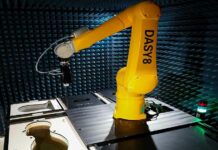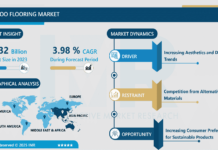Researchers from Victoria University have come up with a state-of-the-art technology that is all set to take the outdated aspects of the construction industry in Australia into a modern digital age. Head of Victoria University’s Built Environment, Professor Zora Vrceli, and Yuan Miao, who happens to be the head of the information technology department in the same university, as well as their respective teams, have clubbed high-tech tools with architecture and engineering to enhance safety training in the construction arena, which has the highest rates of accidents and deaths that are preventable across any other sector in Australia.
With the aid of a Construction Simulator- COSI as well as Virtual Reality- VR at the Werribee Campus of VU, the researchers are looking to reduce the deaths and injuries at the workplace. Apparently, COSI, which has a totally immersive experience that allows trainees to make use of high-tech goggles as well as equipment to enter and also explore a construction site’s detailed simulation and learn about safety, is indeed a big transition from learning about this through computer modules as well as an instruction booklet.
The simulators help the users climb ladders, work in a space that’s confined, move equipment, or even walk along narrow scaffoldings without taking any real risks.
There are certain city councils, construction giants, as well as the Victorian Building Authority, which also happens to be the state’s chief industry regulator, that have gone on to show their inclination towards this move by Victoria University.
According to Professor Vrceli, this project is going to help in the modernization of the construction industry, which as of now happens to be among the least digitally oriented sectors in Australia, which has in turn led to high worksite injury rates as well as inefficiencies and a quality control lacuna.
The CEO of the Builders Academy Australia, Andrew Shea, is of the opinion that training workers through simulated experiences will make a real difference to their learning of the workforce and also have a genuine positive impact.
Enhanced Building Inspections
The researchers are also looking to improve and modernise the building surveying profession. Historically, surveyors had to go ahead with mandatory building inspections during the course of construction using a clipboard and a checklist and make an assessment of the framework, plumbing, and electrics, as well as the building design.
As per Professor Vrceli, the surveyor would come and check that everything is up to code, tick the boxes on paper, and leave. However, if something changes that has an effect on the construction before the next inspection, nobody would have any idea as to what is being done or where the amendments have been made.
What the VU researchers have done is make a cloud-based platform where all the pictures as well as 360-degree scans of the construction site or the building are uploaded and can be accessed remotely or in real time through a smartphone or an iPad. This typically means that there is a trail of evidence when things go wrong, but more significantly, one can have early opportunities to curtail and even prevent defects from happening in the first instance.




























